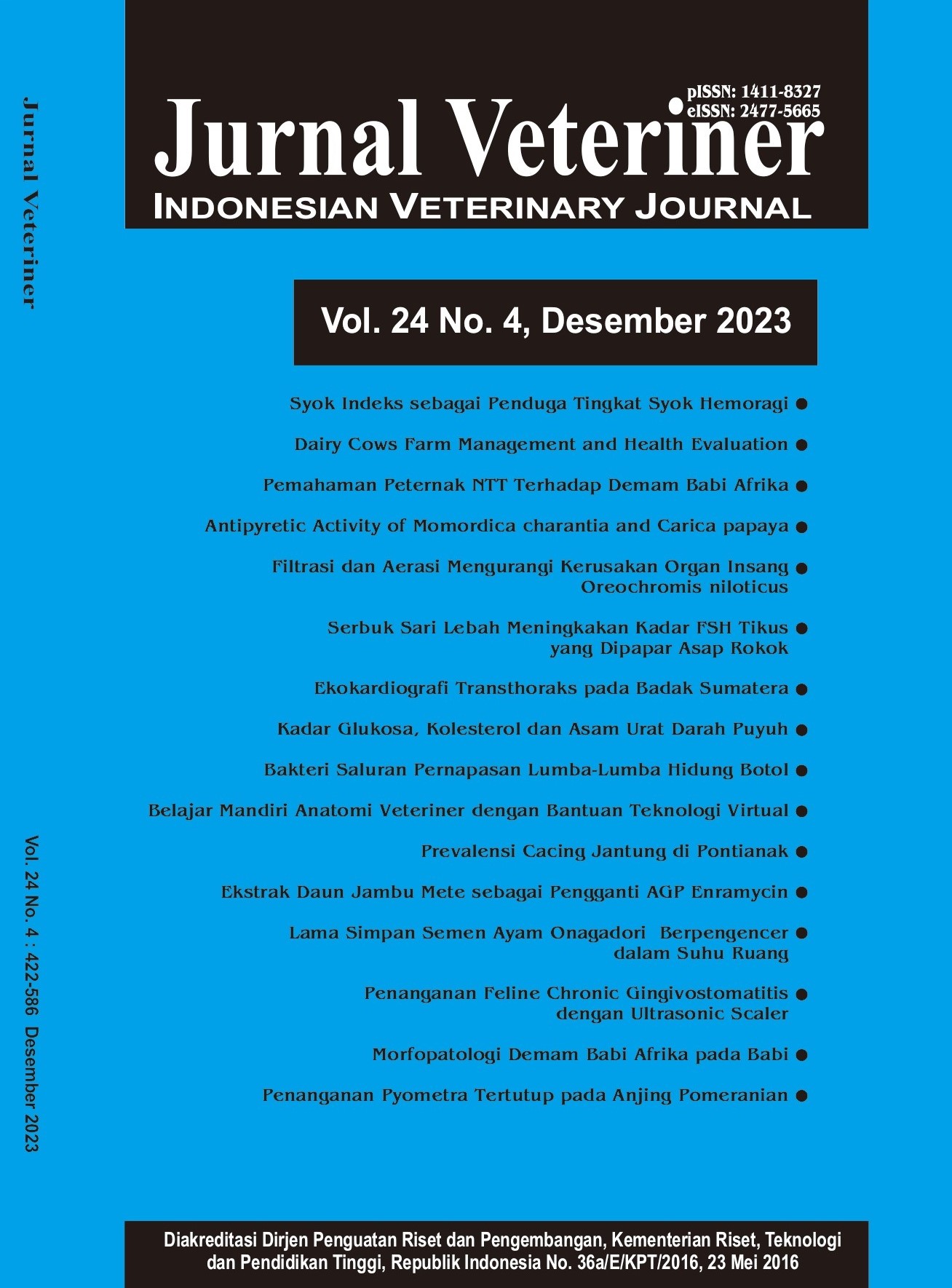Antipyretic Activity of The Combination of Momordica charantia L. and Carica papaya L.on Male Mice (Mus musculus)
Abstract
Fever or pyrexia is a symptom of an illness. Disease infections such as dengue fever, typhus, malaria, liver inflammation, and other infectious diseases are examples of diseases that often cause fever symptoms. To reduce this negative impact means that fever needs to be treated with antipyretics. This study was aimed to determine the antipyretic effectiveness of a combination of papaya and leaf extracts of pare. A total of 15 healthy male mice (Mus musculus) of the ddY strain were 2-3 months old with a weight of 20-30 g were used in this study. Treatment in five groups is group I; ibuprofen 400 mg, group II; Carboxymethyl Cellulosa or CMC-Na 1%, group III (100:100) mg/kg BW, group dose IV (50:150) mg/kg BW, and group dose V (150:50) mg/kg BW, induced fever using the diptheria, pertussis, tetanus (DPT) vaccine with a volume of 0.1 cc (IP) and carried out three repetitions. Observations were made by measuring the rectal temperature of mice using a digital thermometer before DPT vaccine injection or average temperature, 0 minutes (after DPT vaccine injection), 30, 60, 90, and 120 minutes after administering test materials. The combination of papaya leaves and pare leaves can reduce the body temperature of mice. The dose (150:50) mg/kg BW provides the reduction in weight loss body temperature of mice; however, it was not significantly different from ibuprofen.



















